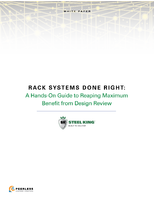Infrared Helps Chocolate Keep Its Temper
Achieving Better Control of Quality of Candies
Carbon infrared heating systems are helping Magna Specialty Confectioners to achieve better control over the quality of their filled chocolate products, as well as saving energy and space when compared with the previous chocolate heating system. Magna Specialty Confectioners make a wide range of chocolates, under contract, for most of the well-known chocolate manufacturers. They have particular expertise in filled products, such as filled chocolate bars and filled chocolate eggs, where the application of heat is an important process step.
In the manufacture of chocolate filled eggs, molten chocolate is poured into molds on a so-called book molding line to form the two halves of the finished product. The chocolate is then chilled so that it solidifies. The molds are then filled and are eventually brought together, rather like the pages of a book, so that they can form the complete eggs. Before this joining can take place, it is necessary to heat the egg rims, so that the two halves in the two molds can fuse together. Previously this had been carried out by using hot air blowers but the temperature profile proved difficult to control. This caused quality control problems and could also cause problems at the subsequent chilling and wrapping stages. It is also important to heat the molds before the chocolate is poured in. If the molds are too warm, then the chocolate can detemper as it is poured in and if they are too cold, then it can chill. It was decided to install Carbon medium wave infrared systems. The pyrometer on the mold heating section of the line measures the temperature of the plastic moulds just before the infrared station. This temperature then dictates the length of time that the heaters are switched on when the molds under the infrared heater. A pyrometer after the heating station then ensures that the correct mould temperature has been achieved to allow chocolate to be deposited. Deflector plates at the front and back of the heating module ensure that only one module at a time is heated. On the book molding section of the line, the pyrometer helps the chocolate temperature to rise to around 30°C, which ensures that the two halves are satisfactorily fused together.
Apart from the quality improvements and the more consistent presentation of the finished product, the new infrared heating system has also provided significant savings in space and energy over the previous system.
Features
o temperatures can be controlled at 29°C ±1°C
o better quality control
o space and energy savings
o fast response of heaters, minimizing damage to the chocolate product
Technical Data
o carbon medium wave infrared system
o four 8.4kW systems,
o pyrometer-controlled
o typical dwell times are 3 to 4 seconds for line speeds of around 16 to 20 modules per minute
For more information, visit our website at:
http://www.noblelight.net/




